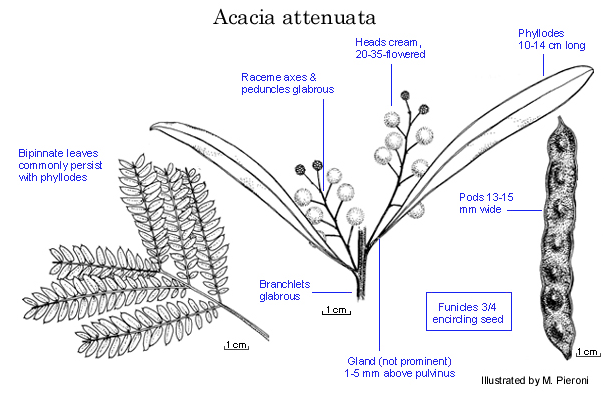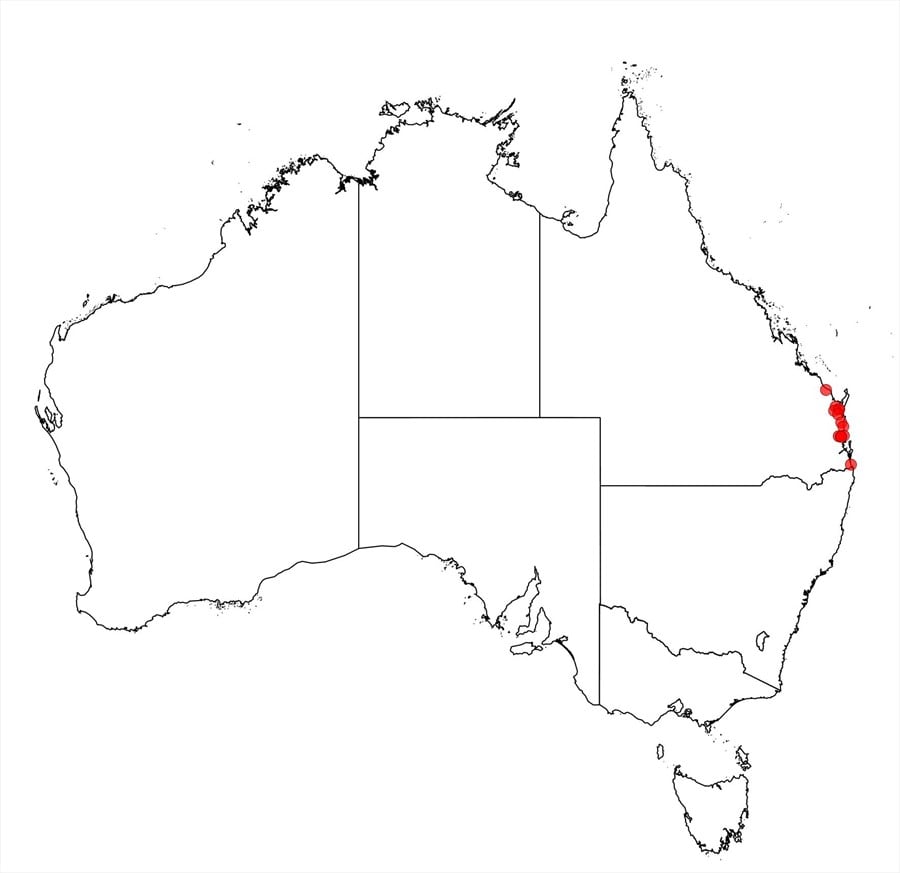Acacia attenuata Maiden & Blakely
WATTLE
Acacias of Australia
Family
Fabaceae
Distribution
Confined to high rainfall coastal plains from Southport N to Maryborough, south-eastern Qld.
Description
Slender shrub 3–4 m high; juvenile bipinnate leaves persistent for a long period. Branchlets glabrous. Phyllodes oblanceolate or narrowly oblong-elliptic, straight to shallowly curved, 9–15 cm long, 7–21 mm wide, much narrowed at base, obtuse-mucronulate, occasionally acute, thin, glabrous; midrib prominent and contiguous with abaxial margin near base; lateral nerves obscure; gland not prominent, 1–5 mm above pulvinus. Inflorescences 6–14-headed racemes; raceme axes 2–8 cm long, glabrous; peduncles 7–10 mm long, glabrous; heads globular, 20–35-flowered, cream. Flowers 5-merous; sepals 1/2–3/4-united, normally densely tomentulose towards apices. Pods narrowly oblong, rounded over seeds along midline, to 10 cm long, 13–20 mm wide, firmly chartaceous to thinly coriaceous, blackish, glabrous. Seeds longitudinal, oblong-elliptic, 6 mm long, dull, dark brown; funicle 3/4 encircling seed, light brown; aril clavate.
Habitat
Grows in heath or layered eucalypt open forest.
Specimens
Qld: 6.5 km SW of Noosaville, June 1966, A.G.Harrold s.n. (BRI); 5 km S of Landsborough, 8 June 1978, M.Olsen & B.Lebler s.n. (BRI).
Notes
Acacia attenuata is a member of the ‘Acacia microbotrya group’, related to A. rubida which has phyllodes that dry a reddish colour and glands 1–4 cm above the pulvinus, light golden flower-heads and narrower pods. Acacia latisepala, like A. attenuata, may flower in the juvenile state but it has golden flower-heads and a prominent gland 10–20 mm above the pulvinus.
FOA Reference
Data derived from Flora of Australia Volumes 11A (2001), 11B (2001) and 12 (1998), products of ABRS, ©Commonwealth of Australia
Author
Minor edits by J.Rogers
B.R.Maslin
This identification key and fact sheets are available as a mobile application:
URL: https://apps.lucidcentral.org/wattle/
© Copyright 2018. All rights reserved.







